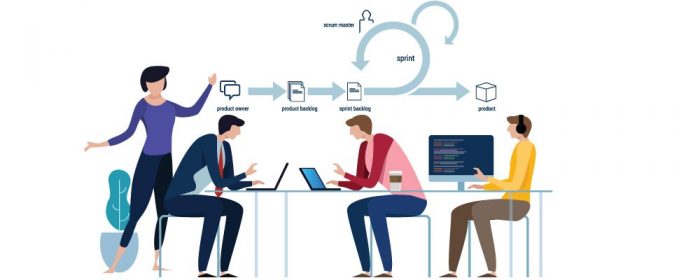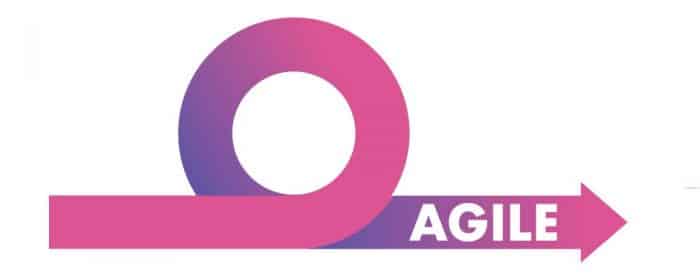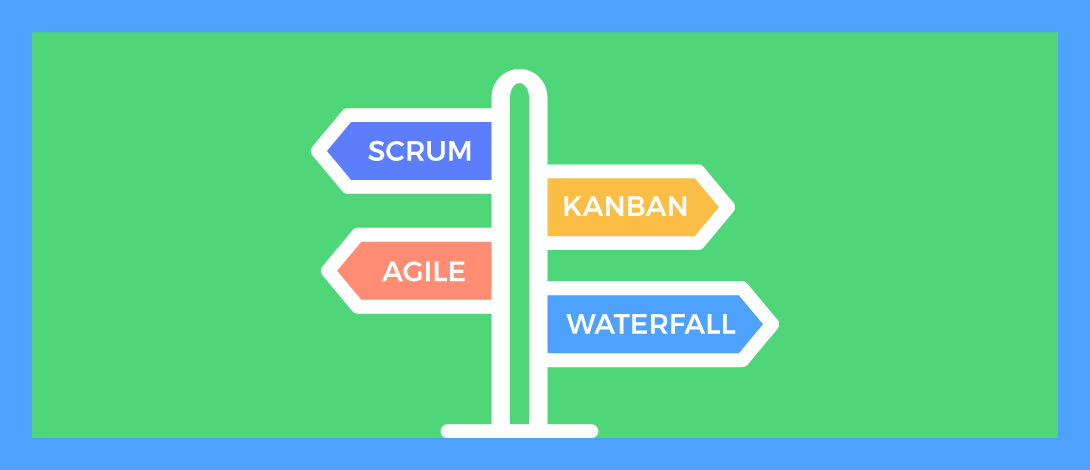Multiple efficient project management frameworks and methodologies have been introduced over the years to ensure effective team management and collaboration in the workplace.
Beginning from the Waterfall model, today multiple approaches are used by software development teams all over the world for more streamlined work with more control of the project flow and deliverables.
Numerous factors need to be considered before selecting the optimum approach for a team and subsequently a project. However, the growth of these approaches has also rendered confusion among the masses regarding the in-depth detail of a certain approach. The circumstances that call for its adoption and the pros and cons that come with these approaches.
In this article, we attempt to clarify the basic concepts behind Scrum, Kanban, Agile, and Waterfall. Usually, professionals, who are new to project management, may find it confusing to clarify their concepts regarding these methods.
Popular searches on the Internet such as Scrum vs Kanban, Scrum vs Agile, Scrum vs Waterfall, Kanban vs Agile, Kanban vs Waterfall, and Agile vs Waterfall manifest the need to have the differences between all these approaches cleared out once and for all.
Scrum vs Kanban vs waterfall vs Agile At A Glance
| Scrum | Kanban | Waterfall | Agile |
| Scrum is focused on completing more work in less time. | Kanban is primarily focused on process optimization. | Waterfall works best for projects that are finished in a linear way and do not allow for reverting to a previous phase. | Agile emphasizes adaptable, concurrent processes. Agile methodologies divide projects into smaller, iterative phases. |
Each element holds its own set of unique why’s and hows, here is our attempt to shed light on what these terms actually mean and what sets them apart.
Let’s begin.
Scrum

Comparing Scrum vs Agile is equivalent to comparing apple to fruit. One is a sub-category of the other. Scrum is one of the Agile frameworks that have taken multiple industries by storm in the last few years.
According to a study by Forbes, 49 percent of the top managers surveyed by Forbes claim that the main reason for Scrum being successful is due to its focus on customers. A tried and proven methodology for optimized collaboration, timely project deliveries, and reduction of errors, Scrum is increasingly gaining popularity in the world of Agile.
Initially assumed to be used by software project management teams, Scrum is designed and developed in a way that can cater to multiple areas of work including software development, education, healthcare, and a lot more.
The concept behind Scrum is the alignment of the team and breaking down work in such a way as to maximize efficiency and reduce bottlenecks all the while moving progressively towards project completion and customer satisfaction.
The roles in Scrum comprise that of the Scrum team, Product Owner, and Scrum Master. The team depicts the set of individuals working on the project, the Product Owner being the person designing the sections of workflow and the Scrum Master facilitates both the team and Product Owner in implementing the established work process.
This involves making sure everyone is in sync with the project deliverables and fully understands the milestones to be accomplished.
Scrum Is More than Just … Scrum:
Encouraging customer involvement at every stage, Scrum helps set the project timeline in the form of Sprints and Daily Scrums. The Sprint portrays the interval or time period for monitoring the completion of a defined set of tasks by the Product Owner in the form of a Product Backlog.
A Sprint can last from seven days to a month depending on the customer requirements and project feasibility. On the other hand, the Daily Scrum encompasses a daily, stand-up meeting between the team, Product Owner, Scrum Master along with customers and management (recommended) to evaluate task completion on a daily level along with hindrances and potential risks at sight relevant to those tasks.
This concept of setting milestones through the assigned roles with defined time periods is aimed at having a better rate of project completion through a transparent workflow and monitoring methods. Customer satisfaction is also more likely due to encouraging involvement throughout the project development life cycle.
Potential pitfalls are addressed by mitigating incoherence among the team leading to better cost management and issue management.
Kanban

Initially invented by Taiichi Ohno, the Kanban method revolutionized the automotive industry. Soon after, it was defined by David Anderson for knowledge work application. Over time, Kanban has attained a significant reputation in various sectors including software, IT operations, and even marketing.
Kanban is yet another of the Agile framework that is designed to make project lifecycle more streamlined and team collaboration more effective albeit through consistent improvements and ease in change management. As with Scrum, comparing Kanban vs Agile is not reasonable since Kanban is a sub-category of Agile frameworks.
Being a part of the same family, when it comes to Scrum vs Kanban, Scrum happens to be winning the race. A reason for this could be that Scrum aims at effective planning right from the inception of the project and consistent evaluation ensuring the project remains on track whereas Kanban focuses more on continuous improvement via incremental modifications within a defined work environment.
According to a research paper by Ahmed, Markkula, and Oivo involving respondents from 27 different organizations, practitioners perceived Kanban as easy to learn and use in individual and in teamwork.
The Kanban system revolves around a central Kanban board that is used for organization and prioritizing the work at hand. Comprised of columns, the Kanban board exhibits each element of the workflow for Progress, Testing, Ready for Release, and Release. Another possible way of defining columns may be To Do, In Progress, In Review, Blocked, and Done. This allows the teams to stay open to changes and easily implement the transition as required.
More Details about Kanban:
Kanban incorporates Work In Progress (WIP), for the task cycle. This involves setting a limit for every column or state mentioned on the Kanban board. This WIP limit determines the number of work items or the amount of work to keep in a certain state at any instance of time.
Reaching a pre-defined WIP limit means no new work can be allowed to categorize in that state. This compels the team to finish the pending items before addressing new entities.
When it comes to the team roles in Scrum vs Kanban, unlike Scrum with a defined set of roles for each purpose, Kanban does not specify any team role. Instead, it focuses on improving the project flow and product quality on a collective or team level.
The Kanban board can be used and modified by anyone in the team as long as it portrays the status of the work entities and the amendments involved. This means there is no single person to make sure the team is aligned or adhering to the established work policies.
Kanban helps towards the overall optimization of a project development cycle by helping teams attain improvement in the project in a continuous manner. This ultimately leads to better rates of throughput and time along with maintaining the quality of the resulting product.
Agile

According to research by the Project Management Institute (PMI), about three-quarters (71%) of organizations use Agile approaches. Agile is a software development approach, which helps teams collaborate together for the corresponding requirements and solutions through continuous evolution.
Agile incorporates policies allowing teams to carry out better planning, development, and timely and early delivery of a project all the while staying prepared for sudden changes and able to aptly respond to these changes.
Of the numerous Agile frameworks being used, some include:
- Scrum.
- Kanban.
- Scrumban (A mix of Scrum and Kanban).
- Extreme Programming (XP).
- Adaptive software development (ASD).
- Agile Modelling.
- Agile Unified Process (AUP).
- Disciplined Agile Delivery.
- Dynamic Systems Development Method (DSDM).
- Feature-driven development (FDD).
- Lean software development.
- Rapid application development (RAD).
When it comes to Agile vs Waterfall, or in other words, Agile vs traditional methods, Agile has gained extreme popularity over its counterpart, the Waterfall method.
The core methodology adopted by these frameworks is that projects are broken down into sections termed as user stories, which are then organized and prioritized before successive delivery in cycles called iterations.
In order to better understand the concept behind Agile, you can check out the Agile Manifesto which comprises a set of twelve core principles designed to make software development efficient and more result-oriented. These principles are:
- Customer satisfaction by early and continuous delivery of valuable software.
- Welcome changing requirements, even in late development.
- Working software is delivered frequently (weeks rather than months).
- Close, daily cooperation between business people and developers.
- Projects are built around motivated individuals, who should be trusted.
- A face-to-face conversation is the best form of communication (co-location).
- Working software is the primary measure of progress.
- Sustainable development, able to maintain a constant pace.
- Continuous attention to technical excellence and good design.
- Simplicity—the art of maximizing the amount of work not done—is essential.
- Best architectures, requirements, and designs emerge from self-organizing teams.
- Regularly, the team reflects on how to become more effective and adjusts accordingly.
As obvious from the stated principles, Agile is meant to focus on and value individuals and interactions (over processes and tools), working software (over comprehensive documentation), customer collaboration (over contract negotiation), and responding to change (over following a plan).
In short, Agile focuses on delivering quality projects incrementally instead of pulling off all relevant activities in one go. This helps maintain track of the project progress leaving enough room for focusing on every distinct element of software project management from the beginning to the end.
For a quick comparison of the 10 best Agile tools, check out this blog post by The Digital Project Manager.
Waterfall
Instead of comparing Scrum vs Waterfall or Kanban vs Waterfall, we can make the comparison simple by assessing the Agile vs Waterfall method scenario. This can be done by understanding the traditional a.k.a. Waterfall method itself.
The Waterfall Model is also referred to as a linear-sequential life cycle model. It was the first Process Model to be introduced. Originating in construction and manufacturing, this model was used in physical environments that were significantly structured and were not adaptable to changes easily.
The Waterfall model was the software development life cycle model adopted as they were not specifically designed alternatives. In this approach, each stage or set of tasks needs to be completed before the next stage can commence.
This avoids overlapping of the project stages. The workflow is designed to flow in a single direction, which is downwards, similar to a waterfall incorporating the stages of project conception, initiation, analysis, design, construction, testing, deployment, and maintenance.
As with every approach, the Waterfall also comes with a set of advantages. For starters, the project planning and designing stages are more established and straight-up resulting in more sync between the development team and customers on project deliverables.
It is also easier to measure progress as the entire scope of the project is made known in advance. Instead of the entire team working on a single stage, developers, testers, business analysts and experts of other areas connected to the project can focus on their corresponding line of work in other projects at the times the project being worked on is in a stage pertaining to a different team.
Difference between Kanban and Waterfall
Both techniques aspire to produce high-quality software, but their underlying ideas are very different. It is difficult to say which technique is superior. Developers think that you should select the one that fits all of your project’s criteria.
What Else Is There to Find Out About Waterfall:
Once the requirements are established by the customers, there is no apparent need for involving the customer until the work is completed.
However, this also makes it a more rigid approach that is less iterative and not open to changes. This calls for a set of disadvantages compared to its Agile counterpart. When it comes to Agile vs Waterfall, the Waterfall model does not allow much room for alterations or revisions.
This makes it significantly difficult to revisit earlier stages in case an issue is encountered or risk is forecasted. Once planned, the project flow must follow the entire development life-cycle before any changes can be made, which makes it highly difficult to implement and sustain today where customer requirements and market trends undergo rapid, unforeseen changes on a regular basis.
For this reason, the Agile approach comes as a reliable alternative, especially for projects and teams that need more flexibility and change management. In fact, 2018 Standish Group Chaos Study results show that in Agile vs Waterfall projects, Agile tends to be twice as successful and one-third less likely to fail than Waterfall projects.
Which Project Management Methodology is Best for You?
So, now that you know about the most popular project management methodologies, the question is which is the best methodology to adopt for you and your team?
There is no black and white answer to that, and what will work for you and your team may not be the best choice for other organizations.
You want to consider what is unique about your team and what you are aiming to achieve. This doesn’t imply that each methodology isn’t there to help you complete the project, but other benefits that they provide, and what they can offer your team, are distinct.
For instance, Scrum is great for streamlining simultaneous workflows.
Whereas for projects requiring a linear workflow Waterfall is the way to go. The production process can be improved with the use of Kanban. And so on.
Another consideration is which methodology you will actually stick to. Any project management methodology is only as good as the way it is implemented. You want to implement a methodology that makes sense to you and your team and you can see working in the long run.
You could even consider adopting hybrid approaches which are gaining popularity due to the flexibility and customization they offer.
No matter which project management methodology you choose, nTask is a flexible platform that will allow you and your team to meet project completion no matter the methodology you choose.
nTask comes with in-built task management, scheduling with Gantt charts and the ability to highlight task dependencies, and Kanban boards just to mention a few ready-to-use features.
All the features available in the software can be used according to the needs of your team to follow your methodology of choice.
Which approach or methodology does your team or organization use and why? Share your stories in the comments below.
See also:
Agile Best Practices Every Agile Team Should Have in Place
FAQ’s
1. Is Kanban Agile or Waterfall?
Kanban strategy is an agile method that aims for constant improvement, project control adaptability, and improved workflow.
2. Explain Kanban vs Scrum vs Waterfall?
- Kanban is a visual methodology that organizes work in a matrix manner.
- Scrum is an agile framework that assists teams in collaborating to produce high-impact work.
- A waterfall splits each project into separate stages that are completed in a sequential sequence.
3. Is Jira a Scrum or Kanban?
Jira tool supports Agile techniques such as Scrum and Kanban. It helps existing Jira project teams to easily transition to Agile practices.

